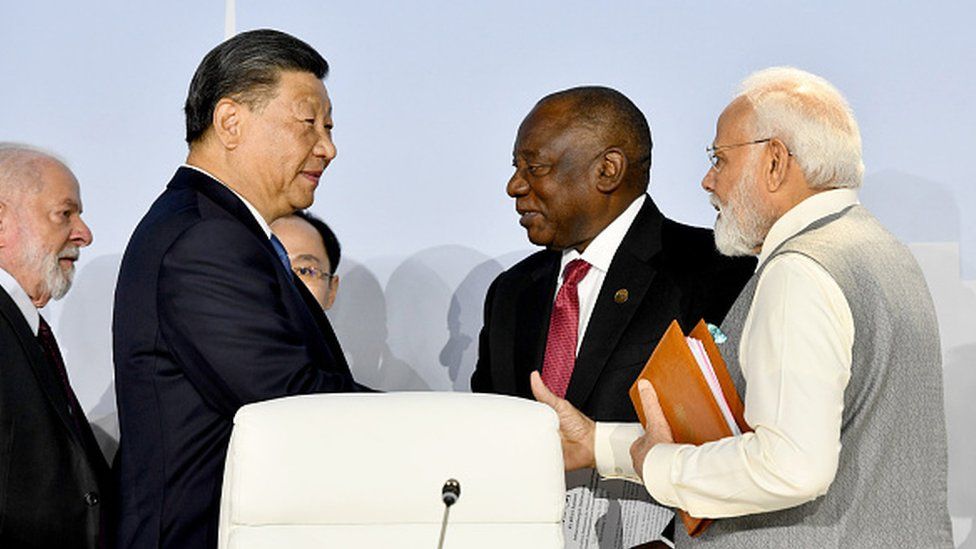PM Modi addressed the Indian Space Research Organisation (ISRO) scientists shortly after it was announced that the Vikram lander had touched down close to the moon’s south pole, praising the outstanding accomplishment. According to Modi, the event was unprecedented and memorable, and because Chandrayaan-3 was part of an ISRO mission with a human-centric focus, its accomplishment represented real statesmanship.
This is a genuinely momentous turning point in our country’s history as an independent one since 1947, and its significance—both materially and figuratively—cannot be overstated. High-profile projects like moon missions carry a lot of risk in terms of money, technology, and reputation. As Pragyaan roams the lunar surface, we still have to wait to see how the 14-day expedition turned out. We also need to view the findings of spectroscopic and sub-atomic particle studies that will arrive from there.
Chandrayaan-3 is a mission for India as well as the Indian Space Research Organisation (ISRO). Any claim that an ISRO mission automatically counts as an Indian mission might be countered. Yes, yet this mission would appear to be first among equals if we treated all of ISRO’s earlier flights equally. The reason for this is that Chandrayaan-2’s narrow failure to meet its planned goals in ISRO’s most recent effort has lingered in the public’s consciousness for the last four years.
India’s space programme has advanced dramatically over the past nine years under Prime Minister Modi, and it is now on par with nations like the US. 389 of the 424 foreign satellites that India has launched so far were launched in the final nine years of the Modi administration. Additionally, of the $174 million that was earned, $157 million occurred in the previous nine years. Similarly, of the €256 million that has been earned so far, €223 million came in the first nine years of the Modi administration.
It is the collective memory of 1.4 billion individuals, which makes public memory a highly potent feeling. The recollection consists of rekindled optimism, a keen feeling of nationalism, ideas of patriotism, and a great sense of pride in the ISRO as an organisation. This is true despite the fact that four years separated Chandrayaan-2 from Chandrayaan-3. By any measure of imagination, these four years were anything but routine. Millions of people died as a result of a pandemic that affected the whole planet. Despite this, the achievement of India’s space mission gives the average Indian person optimism for himself. There are hardly many things that bring Indians together like nothing else. Success in space is one example of this.
Since the dawn of time, humans have been captivated by the concept of space. Therefore, it is not surprising that humans are interested in space exploration. This exploration is viewed as humanity’s victory over extraterrestrial life. Out of all the facets of space travel, lunar exploration has attracted the greatest attention. This is also expected given that every species that lives on Earth can see the moon with their own eyes since it is the lone satellite of the planet. As a result, lunar investigations throughout the past 50 years and beyond have gained enormous public interest.
Additionally, the moon has a particular position and reference in many cultures and civilizations, either as a character in children’s stories or as an often-used metaphor in daily life. The “social aspects” of cosmic or celestial phenomena are typically not of interest to scientists or engineers, although social scientists do take a larger global perspective and work to understand why some things appeal to humans more than others. Such issues are covered by the discipline of international space politics. All countries that have access to space today are eagerly anticipating Chandrayaan-3, especially in light of Russia’s recent moon mission crash-landing.
India is considering this chance not just to appease its local audience’s conscience but also to solidify its position as a space-powered nation among other nations. While visiting the BRICS conference in Johannesburg, South Africa, Indian Prime Minister Narendra Modi will be keenly examining Chandrayaan’s accomplishments. If Chandrayaan-3 successfully lands on the moon’s surface today or on August 23, 2023, India’s stature as a country will rise at a diplomatic gathering like BRICS. Additionally, this would support India’s future space initiatives, including Mission Gaganyaan, which will be the country’s first attempt at a human space travel mission. It was originally scheduled to take place in 2022, the 75th anniversary of India’s independence, but has been moved to 2024 in order to concentrate on Chandrayaan-3.
The focus of space agencies is shifting from satellite launches to addressing the important issues connected to human settlement, extraterrestrial mining, and astrobiology due to the economics of the space industry and quickly evolving technology standards. Additionally, when national military-industrial complexes converge, there is both collaboration and competition in the field of space research. NASA has been a great help to India, especially with regards to Chandrayaan-3’s landing stage. Although space cannot legally belong to any country and is instead the common inheritance of all humanity, control and militarization of space are well-established facts of the modern world.
Most significantly, mankind has a terrible appetite for resources. Resource usage has increased three times since 1970 and, if current trends continue, might increase another twofold by 2050. To sustain our present resource consumption, we would need 1.5 Earths, and if resource use increased, both the ecology and people would suffer greatly. While recycling and the circular economy have been discussed, a complementary solution may materialise if we begin taking resources like water and rare earths from places other than our globe. A space economy, commercial resource extraction, and manned space stations are all affected by this.
Space exploration is a very expensive endeavour that costs billions of dollars. As a result, its victories are spectacular, and its defeats are nearly crest-falling in character. Thus, the public should support any effort made by humanity to reach and explore space. Of course, while evaluating the success or failure of such missions, scientists and those in command do extensive cost analyses. The environment in outer space was not designed for human pursuits or conquests. Instead, it is the general eagerness of humans to rule the cosmos. Considering everything, August 23, 2023, could end up being significant in India’s space history. Both success and failure are equally possible, but perhaps this time the Indian flag will fly over the moon.
Chandrayaan represents our foray into these crucial and essential geopolitical spheres. Several nations are now behind us. It won’t be long until we reach Gaganyaan and Mangalyaan. There will undoubtedly be failures and accomplishments in a difficult field like space science. For this reason, a blatant accomplishment like Chandrayaan-3 is comparable to earning an Olympic gold.








